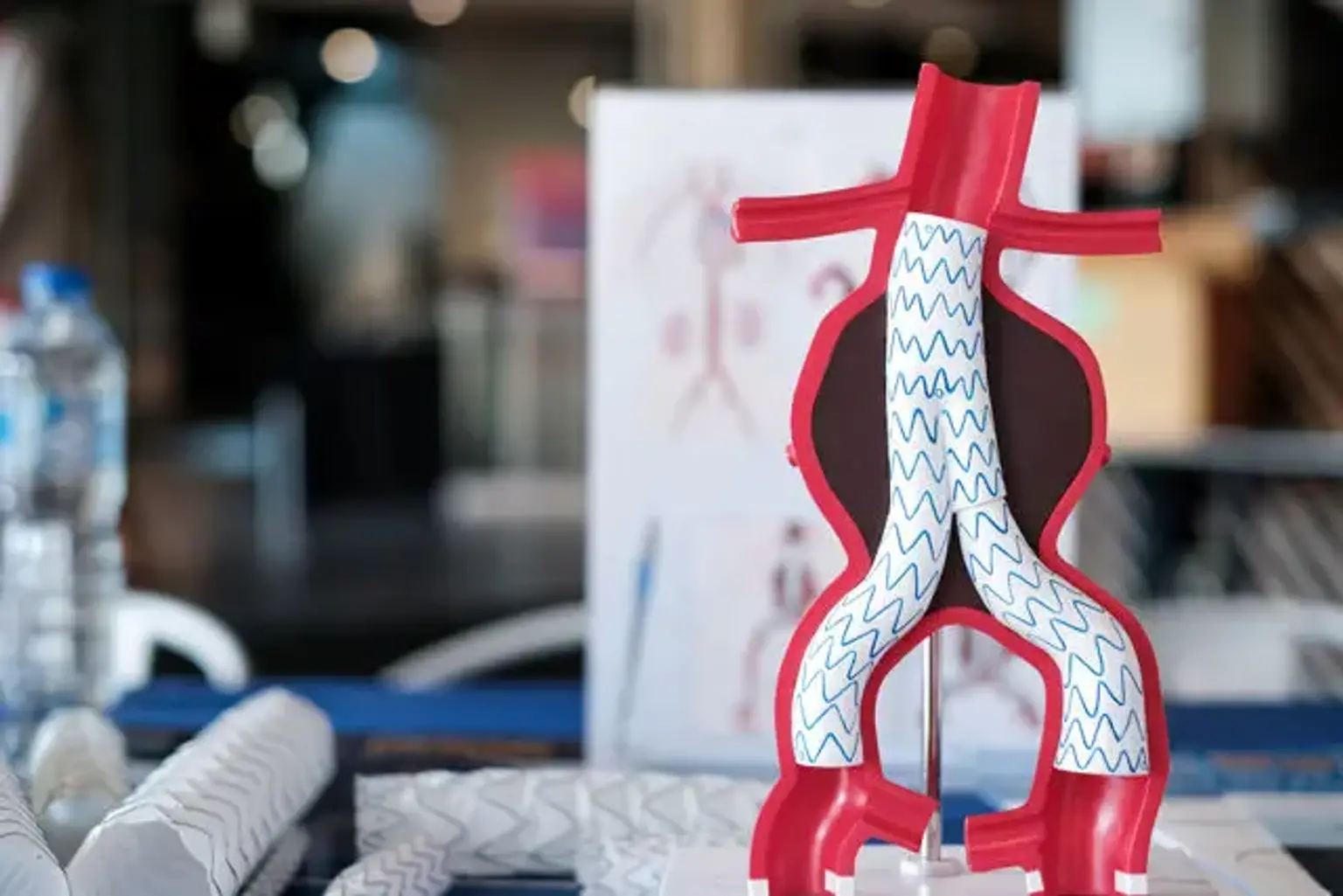Aneurysm repair
An aortic aneurysm is a dilation (enlargement) of the aorta that is more than 1.5 times its usual size. Except when ruptured, they normally do not cause any symptoms. Abdominal, back, or leg discomfort may occur on occasion.
The prevalence of abdominal aortic aneurysm (AAA) has been shown to range between 2 and 12 %, with around 8% of males over the age of 65 being affected. AAA causes around 15,000 deaths per year in the United States and 6,000 to 8,000 deaths per year in the United Kingdom and Ireland. Between 2001 and 2006, about 230,000 AAA surgical repairs on Medicare patients were done in the United States.
An intracranial aneurysm, also known as a brain aneurysm, is a cerebrovascular condition that produces a localized dilatation or ballooning of a cerebral artery or vein.
Aneurysms in the posterior circulation (basilar, vertebral, and posterior connecting arteries) are more likely to rupture. Although basilar artery aneurysms account for approximately 3–5% of all cerebral aneurysms, they are the most prevalent aneurysms in the posterior circulation.
